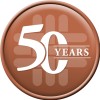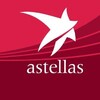
Clinical Study to Compare 3 Multi-Layered Foam Dressings for the Management of Chronic Wounds
Chronic WoundVenous Leg Ulcer1 moreA prospective, randomized, controlled clinical trial (RCT) using a cross-over (repeated measures) design to evaluate safety and efficacy of three foam wound dressings in the local management of chronic wounds.

rTMS Treatment of Persistent Headache and Post Concussion Symptoms Attributed to Mild Traumatic...
Brain InjuriesTraumatic7 moreThe objective of this study is to investigate the treatment effect of repetitive transcranial magnetic stimulation in patients with a history of both persistent post-traumatic headache and post-concussion symptoms. In this double-blind, sham-controlled, concealed allocation, randomized clinical trial, 20 patients aged 18-65 yrs will be recruited from the Calgary Brain Injury Program (CBIP) and the Calgary Headache Assessment and Management Program (CHAMP) / Calgary Chronic Pain Centre, Calgary, Alberta, Canada. Patients will engage in a two-week rTMS treatment protocol (10 treatments) and will be followed for 6 months after therapy.

Treatment of Insomnia for Adolescents With Mild Traumatic Brain Injury
Mild Traumatic Brain InjuryPost-Concussion Syndrome1 moreA substantial number of children and adolescents sustain a mild traumatic brain injury (mTBI) each year. Although research supports that the vast majority of youth will recover quickly and return to normal functioning, some adolescents continue to report problems long after the injury. Disturbed sleep, notably trouble with sleep onset and sleep maintenance, is a frequently reported problem in those with slow recovery from a mTBI. Poor sleep is also associated with cognitive complaints, mood disturbance, and lower quality of life. Despite the identification of sleep disturbance as a problem associated with slow recovery, there are very few treatment options. Cognitive-behavioural therapy for insomnia (CBT-I) has shown promise in children and adolescents as an effective treatment for sleep disturbance, although it has yet to be applied to the adolescent mTBI population who also present with sleep problems. The objective of this study is to examine the treatment of sleep disturbance using cognitive-behavioural therapy for insomnia (CBT-I) in those adolescents who have a protracted recovery from their mTBI. This represents a novel treatment option for this patient population and is anticipated to improve outcomes and quality of life.

Experimentation of an Ankle Mobilization Device for the Rehabilitation of Patients With Acquired...
Acquired Brain InjuryThe proposed clinical investigation plan is a randomized controlled pivotal study with 2 parallel groups, has a total duration of two years. For the study, 30 pediatric patients suffering from acquired brain injury will be recruited at the Scientific institute Eugenio Medea. The primary aim of this study is to assess the clinical benefit of using an ankle mobilization device for the rehabilitation of pediatric patients with acquired brain injuries, on its clinical performance and its risks, and on its safety. The efficacy of the treatment will be evaluated in terms of ankle range of motion (primary outcome). The effects of the treatment on musculoskeletal plasticity will be studied using an isokinetic machine and functional magnetic resonance imaging will provide information on variations of reactivity in the motor cortical network. Ease of use, safety and usability of the device will also be evaluated.

The Difference in Wound Size Reduction Comparing Two Frequently Used Wound Dressings in Everyday...
Wound HealChronic wounds (CW) such as leg or foot ulcers are slow healing wounds. They have a high recurrence rate and are associated with pain, infection, smell and exudate. The signs and symptoms of a chronic wounds are not only a burden on those who are affected by it but also on the health care system and society in general. With a prevalence of 1% in the general population, the prevalence rises to 3% in the over 80-age group. Current therapeutic approaches are multifaceted and focus on improving wound healing and preventing recurrences. Advanced wound dressings, especially super absorbent dressings are an important part of the wound care. Heavy wound exudate, if unabsorbed, may damage surrounding healthy skin and thus delay wound healing and contribute to maceration and excoriation regimen as CW may deliver excessive amounts of exudate followed by maldour. Maldodourous wounds can have a profoundly negative impact on the quality of life of the patient and of their carers causing feelings of guilt repulsion and leading to social isolation and depression. Therefore, it is important to use effective advanced wound dressings that are capable of managing wound exudate and with that promote wound healing. Currently the standard approches to managing exudate and wound odour are the use of hydrocellular foam dressing with silver or absorbent dressings like of a sterile polyacrylate wound pad with activated carbon cloth treatment. However, there is no evidence demonstrating whether there is adifference in wound size as an indicator of wound healing when comparing the application of a sterile polyacrylate wound pad with activated carbon clothtreatment to a standard non-adhesive hydrocellular foam dressing with silver treatment in a randomised controlled trail. A randomized controlled trail with 90 participants in one wound care outpatient clinic is proposed. Data will be analysed using SPSS version 23. Univariate and bivariate analysis will be conducted according to the data level and distribution. This research project is designed to compare two wound dressings in everyday care. Since the cost of leg ulcers to individuals, the economy, and society is high, the evaluation of wound care dressings that leads to a reduction of wound size and promote wound healing are important for the individuals affected, their families, society at large and the health care system.

Honey Versus Povidone-iodine on Laceration Wounds
Laceration FaceWound Heal3 moreThis study evaluates healing time in usage of honey and povidone-iodine over paraffin gauze as dressings in the treatment of acute laceration wounds. In Indonesia, especially in rural area, where most of the resources is limited and modern dressings are expensive and hard-to-find. The investigators tried to find an alternative which was easier to find and could act as a substitute of modern wound dressing. The hypothesis of this study is honey and povidone-iodine could be a good substitute (or equal to) to paraffin gauze on acute laceration wounds. Honey is chosen because of its versatility and already well-known to be used as a chronic wound dressing. Povidone-iodine was chosen as another alternative because it is still one of the most used substance in rural area as a wound dressing, but there is not enough study to support the usage of this substance. Paraffin gauze was chosen as a representative of modern wound dressing because it fulfilled the standard of wound dressing on acute wound, which is non-adherent and also moist.

Treatment of Spinal Cord Injury Patients for Neurogenic Bladder: Anticholinergic Agent vs. Mirabegron...
Spinal Cord InjuriesNeurogenic Bladder1 moreWe propose to test the hypothesis that cognition will improve with substitution of mirabegron for the anticholinergic agent (AC) in elderly persons with spinal cord injury (SCI) who require neurogenic bladder (NGB) treatment.

Use of Negative Pressure Wound Therapy in Morbidly Obese Women After Cesarean Delivery
ObesityMorbid2 moreObese women are more likely have a cesarean delivery and develop subsequent wound complications than normal weight women. Negative pressure wound therapy (NPWT) has been shown to improve surgical wound healing, but this device has not been adequately studied in cesarean deliveries. The aim of our study is to determine the efficacy of NPWT in morbidly obese women after cesarean delivery. Investigators will be randomizing women with a BMI > 40 kg/m2 in a 1:1 ratio to either NPWT (the PREVENA Incision management therapy system Pre 1001 Us) or standard dressing after their cesarean delivery at MedStar Washington Hospital Center. The NPWT will be left in place for a minimum of four days but not to exceed seven days. The standard dressing is typically removed on postoperative day one or two. The primary outcome is a wound complication defined as the formation of a wound infection, seroma, hematoma, separation, or dehiscence from delivery to 4 weeks postpartum. Investigators will also administer a patient satisfaction survey regarding their wound healing experience.

Study of Team Leadership Training Effect on Patient Care
Wounds and InjuriesTraumaBrief Summary: Trauma is a major public health burden; it is the fifth most common cause of mortality overall in the US and accounts for the majority of deaths in patients younger than 45. Trauma resuscitations present unique patient care challenges due to the need to perform complex tasks under uncertain and time-pressured conditions. It is not entirely surprising that one-third to one-half of trauma patient-related errors occurred in emergency departments during the initial resuscitation period. Effective team leadership can enhance teamwork and team adaptability, thus improving teams' ability to handle unexpected and rapidly changing situations. Simulation-based training provides a clinically relevant practice environment that has been recommended for team and team leader training. The purpose of this research is to evaluate the impact of simulation-based leadership training on clinical teamwork, team leadership and patient care. The investigators hypothesize that team leadership training will improve team leadership, teamwork, and critical patient care events during actual trauma resuscitations.

Study to Evaluate the Efficacy of ASP1128 (MA-0217) in Subjects at Risk for Acute Kidney Injury...
Acute Kidney Injury (AKI)The purpose of this study was to evaluate the efficacy of postsurgery treatment with ASP1128 in subjects at risk for AKI following CABG and/or valve surgery. This study also investigated the safety and tolerability of postsurgery treatment with ASP1128, and pharmacokinetic characteristics of ASP1128 in subjects at risk for AKI following CABG and/or valve surgery.
